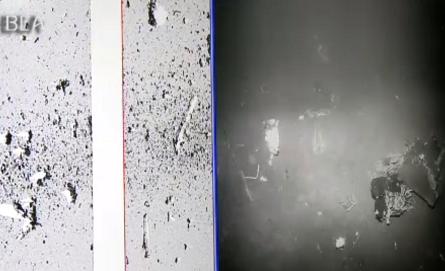French investigators are confident that they have identified the most likely area of wreckage in which to find the flight recorders of the Air France Airbus A330 which crashed in the South Atlantic two years ago.
The fifth phase of the extensive search for the aircraft - which will focus on recovery of the recorders, flight computers and other components - has started following the arrival yesterday of the cable vessel Ile de Sein at the accident site.
It has already started diving operations with a Remora 6000 underwater remote vehicle.
Two working groups have been established to concentrate on analysing photographs taken during the previous search, which ended after the location of flight AF447's wreckage on 3 April, and to assess operational procedures for recovering the recorders.
 |
|---|
© BEA |
 |
|---|
© BEA |
Bureau d'Enquetes et d'Analyses investigator in charge Alain Bouillard says: "We have a good distribution of the parts on the sea floor and we know where to send the [underwater vehicle] down to have the greatest chance of finding the recorders.
"Even though we haven't localised them yet, we know where to search."
BEA says that the database includes some 26,000 photographs of the crash site but "not all the parts are recognisable" and the depth of the wreckage - around 4,000m (13,000ft) remains "a major challenge".
Bouillard adds: "We are sending the [vehicle] into a treacherous area with electrical cables and pieces of the wreckage. To pilot [it] 4,000m below the surface, in this environment, is extremely difficult."
The Ile de Sein, which is operated by Alcatel-Lucent, is carrying 68 personnel - including its crew - and is equipped with cranes capable of lifting 5t.
"Time was an important criterion," says BEA director Jean-Paul Troadec. "We chose a ship that corresponded to our technical criteria and that was available as quickly as possible."
Investigators on board the vessel are accompanied by representatives from Air France and Airbus who will assist in recognising structures from the aircraft as they are raised.
Source: Air Transport Intelligence news



















